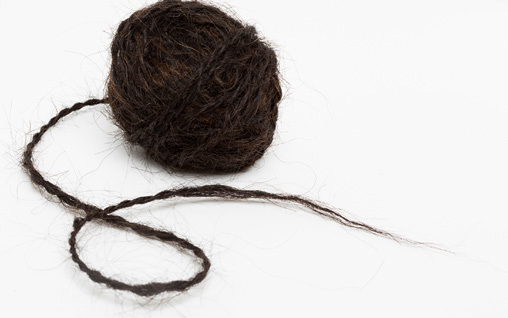The next time you go to the barbershop, take interest into how the hair removed from your scalp is managed and disposed. Globally, the issue of human hair has escalated to a level where solutions are now being sought on how to manage this waste stream.
Hair is mainly made up of protein and organic substances but it takes a bit of time to degrade in the environment. When it decomposes anaerobically, it generates Greenhouse Gases which can cause climate change. Global efforts are geared towards innovation to translate hair into organic fertiliser. This is of course associated with ethical and cultural objections in some countries.
Most barber shops dispose human hair into waste that ends up at landfills, whilst in developed countries, waste hair can be recycled. Although it can decompose, hair takes a long time to degrade in ambient air conditions. It can also be a nuisance in water bodies if left to flow together with wastewater.
Burning waste hair releases greenhouse gas emissions which are detrimental to the environment and drive the onset of climate change. Most of the innovative technologies of dealing with hair are resisted due to the cultural and mythical aspects placed on hair in countries which are culture-centric. One 50-year old man interviewed by the Green Business Gazette mentioned that hair is a symbol of strength and life, therefore should not be manipulated after it is cut off.
Managing waste human hair is very essential as a means of promoting a green economy. Developing value added products from waste hair also creates green jobs and income generation.
As early as 1300BC recycled wigs were made in the beauty and cosmetics industry. Wigs could be used by those without adequate hair, ageing people, those with hair falling off or as a fashion statement. Use of wigs has become a common phenomenon in many countries, making use of hair from others. In this way, the environment is protected from tonnes of hair waste.
Critics of recycling and manipulating hair in religious circles propose that no one should share their hair with another person as hair symbolised vitality, spirituality and longevity. Those who anchor on scientific beliefs, postulate that hair can be used by another person as long as the previous owner has cut off and disposed the hair.
Other options of using waste hair in some countries include staffing mattresses with waste hair. In other circumstances, hair has been used as an absorbent material for dealing with oil spillages. In the year 2020, Australia collected more than 10 000 tonnes of hair to ship to Mauritius which was dealing with a 4000 tonnes oil spill involving VS Wakashio Ship in Mauritius. The hair was to be used as an absorbent material. “Hair booms” staffed with hair have become a common phenomenon in dealing with oil spillages in many countries. The circumstances vary from country to country and lessons have to be transferred with consideration of context. Feel free to share with the Green Business Gazette your experiences in waste management related to waste human hair.
Author
-

Tawanda Collins Muzamwese is the Editor in Chief of the Green Business Gazette Magazine. He is is an international consultant in sustainable business development with massive experience in training, consulting and auditing. He has facilitated capacity development in more than 100 enterprises drawn from over 30 countries. He is the founder of the sustainability think-tank called Toxiconsol Consultancy t/a African Sustainability Consultants. He is the Editor in Chief of the Green Business Gazette Magazine. He is a consultant and business coach with over 13 years experience. Tawanda is a Management Systems Consultant working on promoting development and implementation of ISO Standards (ISO 14001:2015, ISO 9001:2015 and ISO 45001:2018) in both developed and developing countries. With his inspirational and pragmatic writing style he has written cutting edge books including: 1) How to grow a Side-hustle into a viable business - Overcome Salary Dependency 2) The Leading Consultant: How become an authority in your professional field 3) Step-by-Step Guide to implementing Safety, Health, Environment and Quality Management Systems 4) Stepping on Higher Perspectives: Greatness Tips Motivational Series 5) Sustainability Guidebook for Boards and CEOs: Leading from the front Tawanda writes about sustainability, motivation, safety, health, environment and quality management. His books are relevant to both developed and developing countries. With practical approaches and case studies, he provides incisive insights into entrepreneurship. His philosophy is based on the premise that every human being has potential to make a significant difference in their lifetime. He writes books on taking personal responsibility for progression in life. He motivates entrepreneurs to implement income generating projects and determine their own financial destiny. He also motivates companies to take up sustainability initiatives. A start-up coach, public speaker, environmentalist, safety, health and quality management expert, Muzamwese bridges the gap between theory and practice through building capacity and sharing practical case studies in his books.
View all posts



